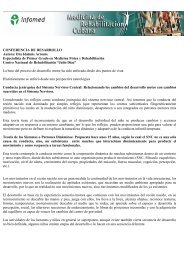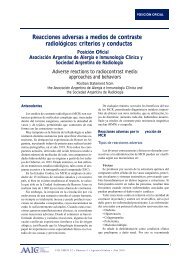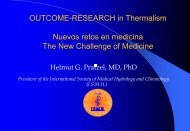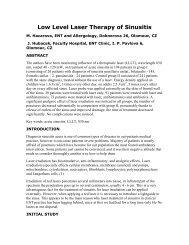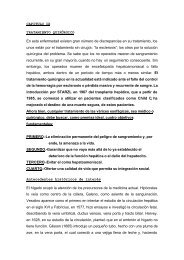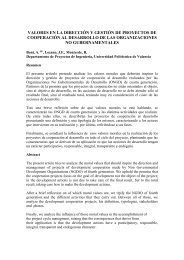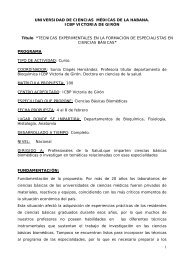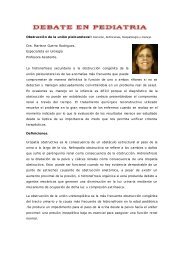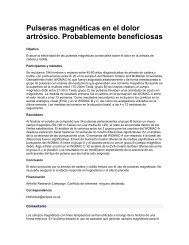Comparison ofthree facebow/semi-adjustable articulator systems for ...
Comparison ofthree facebow/semi-adjustable articulator systems for ...
Comparison ofthree facebow/semi-adjustable articulator systems for ...
Create successful ePaper yourself
Turn your PDF publications into a flip-book with our unique Google optimized e-Paper software.
Rabone angle setter (Rabone, England) on a custommade<br />
80-mm extension to the bite-<strong>for</strong>k (Figs 1&2).<br />
This was made of 12 mm square aluminum with a<br />
centric core drilled to fit over the bite-<strong>for</strong>ks as a sleeve<br />
with a line scored parallel with its longitudinal axis.<br />
The upper arm of the <strong>articulator</strong> was also levelled at<br />
true horizontal using a small spirit level.<br />
Measurements<br />
The angle between the bite-<strong>for</strong>k and the upper <strong>articulator</strong><br />
arm was measured to indicate the steepness of<br />
the maxillary occlusal plane. The upper <strong>articulator</strong><br />
arm was horizontal and there<strong>for</strong>e parallel to the<br />
Frank<strong>for</strong>t plane. The angle between the bite-<strong>for</strong>k<br />
extension and the upper <strong>articulator</strong> arm was measured<br />
with a Robone angle setter positioned on the<br />
extension. The angle setter is based on the principle of<br />
a bubble-gauge within a rotating core to an angular<br />
scale.<br />
Cephalometric analysis<br />
Cephalometric tracing done by hand on fine acetate<br />
sheets in a darkened room by the same operator who<br />
did the clinical study. The angle on the cephalogram<br />
that reproduced the angle measured clinically on the<br />
<strong>articulator</strong> was Frank<strong>for</strong>t plane to maxillary occlusal<br />
plane (Fp/MOP). The Frank<strong>for</strong>t plane is a line<br />
between the machine porion and orbitale, and the<br />
maxillary occlusal plane is between first molar<br />
mesiobuccal cusp and the incisor edge.<br />
Statistical analysis<br />
The significance of differences between measurements<br />
was assessed using the Statistical Package <strong>for</strong> the<br />
Social Sciences software (SPSS) on the University of<br />
Liverpool Unix system. Continuous data were<br />
analysed by the appropriate parametric test.<br />
Differences between groups were analysed by one-way<br />
analysis of variance (ANOVA).<br />
Error of the method<br />
A random selection of five out of the 20 cases had<br />
their measurements repeated to establish the SE of the<br />
method. This was done by removing the <strong>facebow</strong>s<br />
from their <strong>articulator</strong>s and re-mounting them 24<br />
hours later to repeat readings. The cephalograms were<br />
also retraced <strong>for</strong> these subjects to test reproducibility.<br />
RESULTS<br />
Three <strong>facebow</strong>/<strong>semi</strong>-<strong>adjustable</strong> <strong>articulator</strong> <strong>systems</strong> 187<br />
Fig. 1 – Whipmix <strong>facebow</strong> and <strong>articulator</strong> on levelled plat<strong>for</strong>m<br />
with Rabone angle setter measuring the steepness of the occlusal<br />
plane regulated by the bite-<strong>for</strong>k extension. Fig. 2 – Photograph of the custom-made bite-<strong>for</strong>k extension with<br />
nylon fixing screw.<br />
Twenty patients were recruited to the study, 10 in each<br />
surgical category of skeletal class II and III (Table 3).<br />
The mean time lapse between the pre-orthodontic<br />
treatment radiography and collecting <strong>facebow</strong> records<br />
was 3.2 months (range 1–7) but the interval between<br />
commencement of orthodontic treatment and taking<br />
<strong>facebow</strong> records was one month.<br />
The anteroposterior and vertical skeletal parameters<br />
are presented individually <strong>for</strong> skeletal classes II<br />
and III in Table 4. Most patients required bimaxillary<br />
procedures to correct their skeletal disproportion and<br />
malocclusion (Table 5). Only two patients could be<br />
treated by mandibular surgery alone.<br />
The angle between occulusal plane measured from<br />
bite-<strong>for</strong>k extension to upper <strong>articulator</strong> arm was compared<br />
with the traced Frank<strong>for</strong>t plane to maxillary<br />
occlusal plane angle. The ‘gold standard’ was there<strong>for</strong>e<br />
the cephalometric angle, which <strong>for</strong> the group was<br />
14.6° with a relatively large SD (Table 6).<br />
Table 4 – Mean (SD) orthodontic and skeletal measurements (°)<br />
made on cephalograms (n = 10 in each group)<br />
Angle Skeletal II Skeletal III<br />
ANB 6 (2.9) –4.6 (2.8)<br />
FMPA 35.7 (9.9) 36.5 (7.4)<br />
MMPA 32.1 (8.2) 28.8 (4.3)




